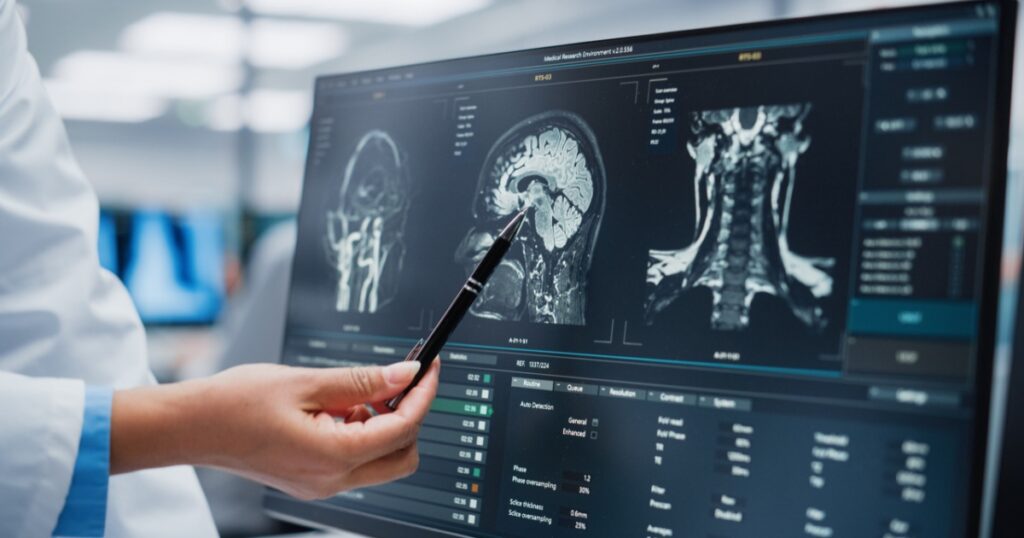You’ve probably heard of an MRI, but do you actually know what they are and why they are used? Magnetic resonance imaging (MRI) is a medical imaging technique that uses a strong magnetic field and radio waves to produce detailed images of internal body structures. MRIs are used to diagnose a wide range of medical conditions, including joint injuries, brain and spinal cord abnormalities, and cancer. In some cases, patients may be given a contrast agent during the MRI to improve the images produced by the machine. However, there have been concerns about the potential side effects of these contrast agents, particularly gadolinium-based agents. Understanding the risks associated with MRIs will help you have honest conversations with your medical care provider in order to map out the best course of action for you.
Understanding MRIs

Before diving into the potential side effects of MRI contrasts, it is important to understand how MRI scans work. MRIs use a powerful magnet to align the protons in water molecules in the body. Radio waves are then used to temporarily disturb this alignment, which causes the protons to emit a signal that can be detected by the MRI machine. The machine uses these signals to create highly detailed images of the body’s internal structures. Certain tissues and structures in the body may appear similar on an MRI scan, making it difficult to distinguish between them. This is where MRI contrasts come into play.
MRIs are used for a variety of reasons, including:

- To diagnose and monitor diseases and conditions
- To assess the effectiveness of treatment
- To guide surgical procedures
- To evaluate the extent of injuries or trauma
- To screen for cancer and other diseases
- To evaluate the function of organs such as the heart, liver, kidneys, and brain
Read More: 30 Cancer Survivors Share Subtle Signs They Knew Something Was Off
What are MRI Contrasts?

MRI contrasts are substances that are injected into the body before or during an MRI scan to help certain structures appear more clearly. These contrasts work by altering the magnetic properties of certain tissues, which makes them appear brighter or darker on the resulting images. (2) There are several types of MRI contrasts, including gadolinium-based contrast agents, iodine-based contrast agents, and iron oxide contrast agents. Gadolinium-based contrast agents (GBCAs) are the most commonly used MRI contrasts. They are also not without their controversy over safety concerns.
What are the side effects of MRIs?

While MRI contrasts are generally considered safe, there have been concerns about the potential side effects of gadolinium-based contrast agents. In particular, some patients have reported developing a serious condition called nephrogenic systemic fibrosis (NSF) after being injected with these contrasts. (3) NSF is a rare but serious condition that causes fibrosis (scarring) of the skin and internal organs. Symptoms of NSF include hardening and tightening of the skin, joint pain, and muscle weakness. The condition is more common in patients with kidney problems, and the risk is higher in patients who receive a higher dose of gadolinium.
In addition to NSF

There have also been concerns about the accumulation of gadolinium in the body after repeated use of these contrasts. While the effects of gadolinium accumulation are not yet fully understood, there is evidence to suggest that it may be associated with certain health problems, including bone and joint problems and cognitive decline.
Read More: 10 Signs of Pancreatic Cancer You Should Never Ignore
Gadolinium Side Effects: Toxicity & Nephrogenic Systemic Fibrosis

Unfortunately, gadolinium toxicity and NSF are both serious side effects that can develop after exposure to gadolinium-based contrast agents. Gadolinium is a highly toxic substance, which is why it is typically bound to a chelating agent (a substance that binds to metals) before being injected into the body. While these chelating agents are designed to prevent toxicity, they do not completely eliminate the risk. In patients with kidney problems, the risk of gadolinium toxicity is higher because their kidneys are less able to excrete the contrast agent from the body. This can lead to high levels of gadolinium in the blood, increasing the risk of NSF.
The good news is that NSF is a rare condition

Most patients who receive gadolinium-based contrasts do not experience any serious side effects. However, it is important to speak with your healthcare provider about any concerns you may have about the use of MRI contrasts, particularly if you have kidney problems or a history of gadolinium exposure.
MRI contrasts can be helpful in producing clear and detailed images of the body’s internal structures. However, gadolinium-based contrasts have been associated with serious side effects, including nephrogenic systemic fibrosis and gadolinium accumulation. If you have concerns about the use of MRI contrasts, be sure to speak with your healthcare provider to determine the best course of action for your specific needs.
Read More: Chemo Brain & 18 Long-Term Chemo Side Effects You Never Hear About
Sources
- “Magnetic Resonance Imaging (MRI) of the Brain and Spine: Basics.” Case. Edu
- “What Is an MRI With Contrast?” Very Well Health. Jonathan Cluett, MD. June 27, 2023
- “Gadolinium Side Effects.” Drug Watch. Jessica D. Hess, Ph.D.

